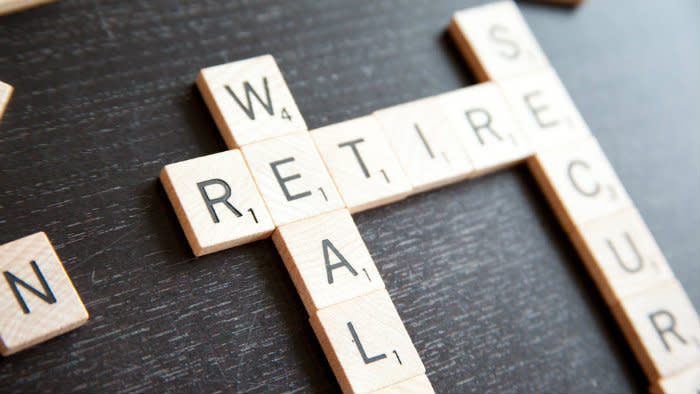How Much Do You Need to Save for Early Retirement?

Even if you don?t pine for days of doing nothing but golf, reading, or just lounging on a beach somewhere, it would still be nice to have that option.
There?s just one problem. Early retirement takes a lot of money.
Most retirees use a 4% withdrawal rate as a rule of thumb. Studies have shown someone can take out 4% of their portfolio each year over long periods of time and not run out of money ? at least about 98% of the time.
Many investors go one step further and put their capital into a portfolio of dividend-paying stocks that yield 4%. The goal is to live on the dividends while never touching the principal. If the portfolio goes up over time, that?s bonus cash that can be donated, passed on to heirs, or even squandered frivolously.
Let?s take a closer look at how much you?ll need to retire early.
The bare-bones option
The quickest way to retire early is to amass a nest egg that pays $2,000 per month and then move to a part of the world where living expenses are much more reasonable than they are here in Canada. Possible destinations include Mexico, Costa Rica, and Thailand, among others.
To generate $2,000 per month at a 4% withdrawal rate, you?d have to invest $600,000. Keep in mind the $2,000 per month generated would be before taxes, but it?s not terribly difficult to keep your tax bill very low if your only source of income is dividends. You may even qualify for a 0% tax rate.
The middle option
The average Canadian household earns about $80,000 per year before taxes. Most early retirees would like to at least maintain that lifestyle.
I?m firmly convinced a family wouldn?t have to earn that much to maintain the same lifestyle in retirement. Many costs can be cut if one (or both) spouses aren?t going in to work every day.
Commuting costs are a killer, and dressing for work can also be expensive. If you?re retired, you no longer have to save for retirement. The government doesn?t deduct CPP and EI contributions from passive income either. And remember, dividends get extremely favourable tax treatment.
I think a comfortable middle-class retirement can be had for $50,000 per year ? or even less if the house is already paid off.
An investor would need $1.25 million spinning off income at 4% to hit $50,000 per year. That?s achievable, but it would take a lot of saving.
The high life
One of the reasons why many folks don?t want to retire early is because they make enough money to afford a pretty extravagant lifestyle. Why give that up?
To replicate an upper-class lifestyle in an early retirement, I?m going to assume a couple needs an annual income of $100,000 per year. To generate that in dividends, they?d have to save up $2.5 million. That?s a tall order, especially in a short-enough period to retire early. But it?s certainly in the realm of possibility, especially for somebody earning $200,000 per year (or more) during their working years.
Which stocks?
Now that we know how much monthly income you?ll need to retire early, another question remains. Where should it be invested?
One of my favourite dividend payers is Extendicare Inc. (TSX:EXE), one of Canada?s biggest owners and operators of retirement homes. It?s also a big player in the home health sector. As baby boomers continue to age, demand should skyrocket. Shares currently yield 4.5% and pay dividends monthly.
Another great dividend stock is Inter Pipeline Ltd. (TSX:IPL), which has quietly captured a large portion of pipeline capacity coming from Alberta?s oil sands to refineries in the Edmonton area. It pays a 5.7% dividend and has raised the payout each year since 2008.
Don?t think just because Inter Pipeline has a generous dividend that you won?t get capital gains. Shares are up 220% in the last decade.
The bottom line
Early retirement is certainly within your reach, although it won?t be easy. It?ll take years ? likely decades ? of careful spending, diligent saving, and smart investing to get to even a bare-bones retirement.
It?ll be worth it, though. I?ve yet to meet an early retiree who regrets their decision.
How to Find Great Dividend Stocks
Over a nearly 30-year period, dividend-paying stocks earned about 18X more than their non-dividend counterparts!
Yet incredibly, it's only one part of the story.
To find out how these same stocks had 45% less volatility (and how you can try to take advantage!), click here to read this exhaustive report.
More reading
Fool contributor Nelson Smith owns shares of EXTENDICARE INC. Extendicare is a recommendation of Stock Advisor Canada.
How to Find Great Dividend Stocks
Over a nearly 30-year period, dividend-paying stocks earned about 18X more than their non-dividend counterparts!
Yet incredibly, it's only one part of the story.
To find out how these same stocks had 45% less volatility (and how you can try to take advantage!), click here to read this exhaustive report.
Fool contributor Nelson Smith owns shares of EXTENDICARE INC. Extendicare is a recommendation of Stock Advisor Canada.

 Yahoo Finance
Yahoo Finance 